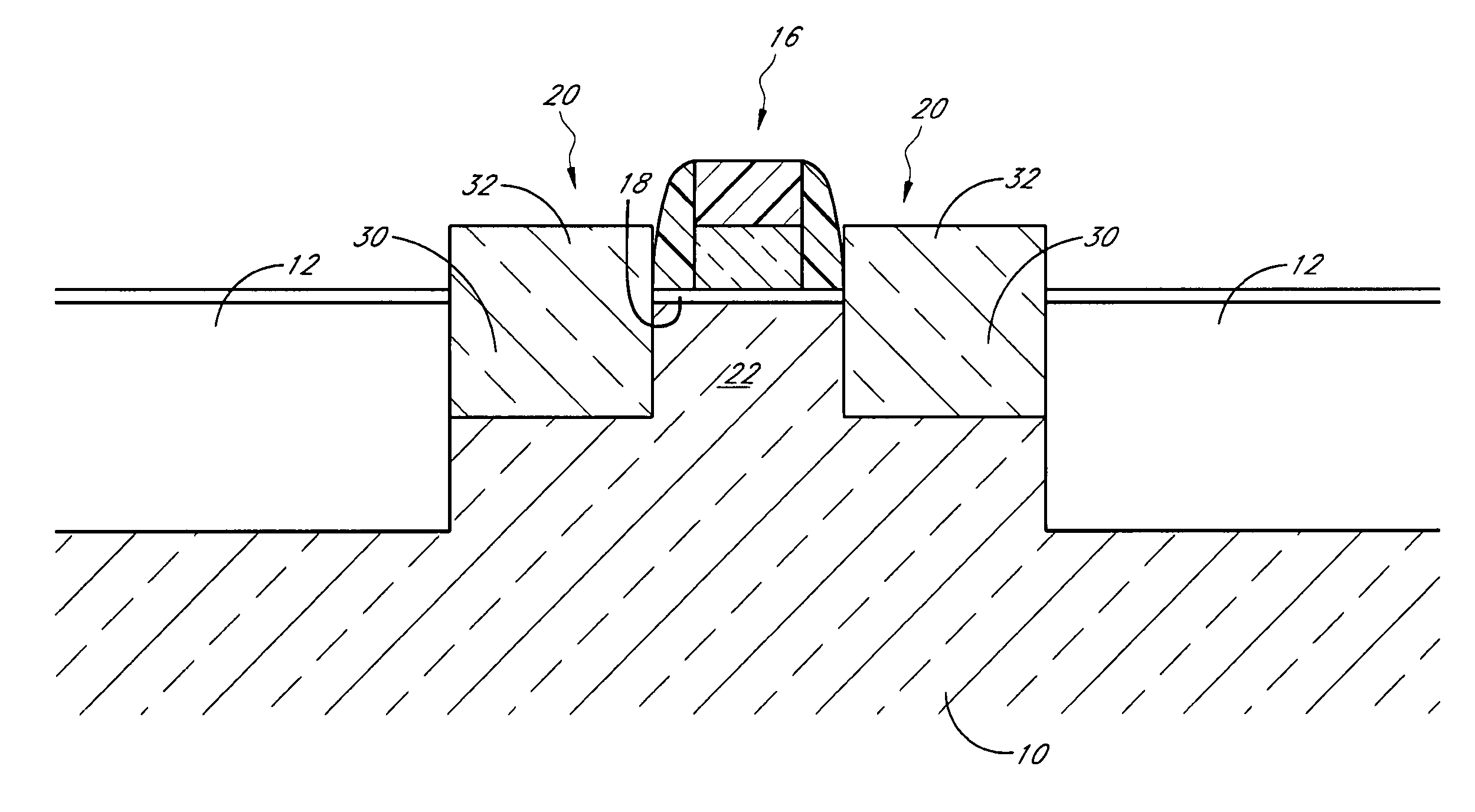Epitaxial deposition of doped semiconductor materials
a semiconductor material and epitaxial deposition technology, applied in the field of epitaxial deposition, can solve the problem of leaving the performance of the resulting shallow junction device unaffected
- Summary
- Abstract
- Description
- Claims
- Application Information
AI Technical Summary
Benefits of technology
Problems solved by technology
Method used
Image
Examples
example process
[0034 Integration.
[0035]FIG. 1 illustrates a example silicon wafer substrate 10. The substrate 10 optionally includes an epitaxial layer formed over a wafer or an SOI substrate. Field isolation regions 12 have been formed by conventional shallow trench isolation (“STI”) techniques, defining active areas 14 in windows among the STI elements. Alternatively, other suitable methods are used to define field insulating material, including local oxidation of silicon (“LOCOS”) and a number of variations on LOCOS or STI. Typically, several active areas are defined simultaneously by STI across the substrate 10, and the STI often forms a web separating transistor active areas 14 from one another. In an example embodiment, the substrate is background doped at a level suitable for channel formation.
[0036]FIG. 2 illustrates the substrate 10 after formation of a gate electrode 16 over the active area 14. In the example embodiment illustrated in FIG. 2, the gate electrode 16 is illustrated as a tra...
PUM
| Property | Measurement | Unit |
|---|---|---|
| pressure | aaaaa | aaaaa |
| partial pressure | aaaaa | aaaaa |
| partial pressure | aaaaa | aaaaa |
Abstract
Description
Claims
Application Information
 Login to View More
Login to View More - R&D
- Intellectual Property
- Life Sciences
- Materials
- Tech Scout
- Unparalleled Data Quality
- Higher Quality Content
- 60% Fewer Hallucinations
Browse by: Latest US Patents, China's latest patents, Technical Efficacy Thesaurus, Application Domain, Technology Topic, Popular Technical Reports.
© 2025 PatSnap. All rights reserved.Legal|Privacy policy|Modern Slavery Act Transparency Statement|Sitemap|About US| Contact US: help@patsnap.com



